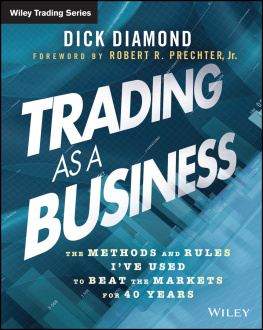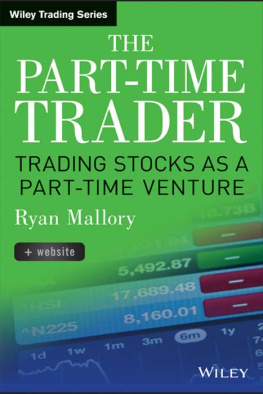Publishing details
HARRIMAN HOUSE LTD
3A Penns Road
Petersfield
Hampshire
GU32 2EW
GREAT BRITAIN
Tel: +44 (0)1730 233870
Fax: +44 (0)1730 233880
email: enquiries@harriman-house.com
web site: www.harriman-house.com
First published in Great Britain in 2001
This eBook edition 2012
Copyright Harriman House Ltd
ISBN: 978-0-85719-213-4
The right of the contributors to be identified as authors has been asserted by them in accordance with the Copyright, Design and Patents Act 1988.
British Library Cataloguing in Publication Data
A CIP catalogue record for this book can be obtained from the British Library.
All rights reserved; no part of this publication may be reproduced, stored in a retrieval system, or transmitted in any form or by any means, electronic, mechanical, photocopying, recording, or otherwise without the prior written permission of the Publisher. This book may not be lent, resold, hired out or otherwise disposed of by way of trade in any form of binding or cover other than that in which it is published without the prior written consent of the Publisher.
No responsibility for loss occasioned to any person or corporate body acting or refraining to act as a result of reading material in this book can be accepted by the Publisher, by the Authors, or by the employers of the Authors.
The rules provided by the Authors are not offered as, nor should they be inferred to be, advice or recommendation to readers, since the financial circumstances of readers will vary greatly and investment behaviour which may be appropriate for one reader is unlikely to be appropriate for others.
Authors have contribued their rules in an individual capacity and, even where the name of their employer is referred to in the text, the rules should not be attributed to the employer or any other named body, nor to the author as an employee or representative of that employer or other body.
Acknowledgements
The people we invited to contribute to this book are, without exception, busy professionals whose expertise is in strong demand. When asked to give up their time for no compensation, they might easily have declined for any number of reasons. They didnt. Instead, they contributed freely and enthusiastically. We are grateful to them, and hope that they think the effort was worthwhile.
We also thank them for producing such thought-provoking rules. One of our worries when we started was that the book would end up with a series of variations on Cut losses and run profits! As it turned out, the material was far more interesting and diverse than that. In all cases the personality of the contributor comes through strongly, confirming that investing is more than the dry science it is sometimes assumed to be.
Thank you, too, to everybody at Harriman House who helped on the book.
Philip Jenks, Stephen Eckett
Introduction
Back in 2001, now more than a decade ago, we compiled and published The Harriman House Book of Investing Rules. The project was a huge success the rules provided by the contributors were fascinating, insightful and entertaining and for the first time the book pooled together collected wisdom of 150 of the worlds greatest traders in one place.
One of the many strengths of the rules that were written for and included in the original publication was their timeless quality these gems of investing and trading wisdom apply to a range of markets across a spread of time periods and are not confined to one market or one set of circumstances.
And so it is that the decision was made to republish the original rules in a more condensed form and in a new format. In this eBook The Original Harriman House Book of Trading Rules: Collected Wisdom From 80 International Stock Market Traders you will find just that; 80 sets of trading rules from expert international traders. As with the original publication, these rules provide distilled knowledge from experts on what they consider to the key determinants of trading success.
You will notice that the experts do not agree this is intentional as trading is a diverse and conflicting pursuit and you will notice that the rules are not comprehensive this is also intentional, as this is a reference guide to be dipped into and to encourage you to take up further reading elsewhere on subjects that appeal to you.
We hope you enjoy reading these rules and find them to be useful in clarifying some aspects of your trading approach.
The original publication of 150 rules is also available as an eBook, from all good online retailers.
www.harriman-house.com/investingrules
Philip Jenks, Stephen Eckett
Robert Z. Aliber
Robert Z. Aliber is Professor of International Economics and Finance at the Graduate School of Business, University of Chicago.
His research activities include: the international financial system; exchange rate issues; international money, capital markets and capital flows; the multinational firm; international banking; public policy issues.
Books
The New International Money Game, Palgrave, 2001
The International Money Game, Palgrave, 1988
The Selected Essays of Robert Aliber (Economists of the Twentieth Century.) Edward Elgar, 2004
The Multinational Paradigm, The MIT Press, 2003
Manias, Panics and Crashes: A History of Financial Crises (Charles P. Kindleberger), Palgrave Macmillan, 2005
International markets and capital flows
1. All propositions about rates of return in financial markets are clichs.
Market literature is full of rules about achieving above average returns. These rules are clichs rather than eternal truths. No scientific proposition about beating the market beats the market for an extended period.
2. Financial markets are mean-reverting.
Prices in financial markets always tend to move back toward equilibrium values when they are not moving away from these equilibrium values.
3. Currency markets overshoot and undershoot and equity markets overshoot and undershoot.
There are observable trend values in both the currency markets and the stock markets. The variations around these trends (overshooting and undershooting) reflect the variability of cross border flows of capital in the foreign exchange markets and changes in investor optimism and pessimism in the stock markets.
4. Buy and hold strategies generally are less rewarding than trading strategies.
The clich that markets can't be timed may be right for some investors all of the time, and for all investors some of the time, but there are times when market prices are far above or far below their long run equilibrium prices.
5. Watch the capital flows in and out of countries.
An increase in the inflow of capital to a country is likely to be associated with an increase in the foreign exchange value of its currency and an increase in prices of stocks of firms headquartered in the country.
6. An increase in the inflation rate in a country is likely to be associated with a depreciation of its currency.
It is also likely to lead to a decrease in prices of stocks of domestic firms.

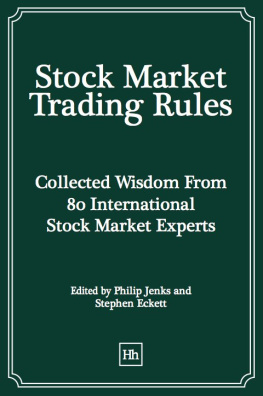
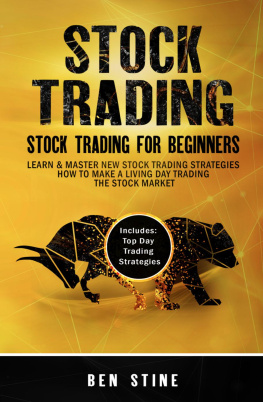
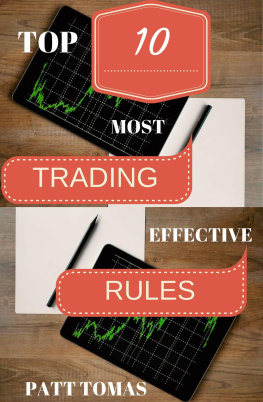
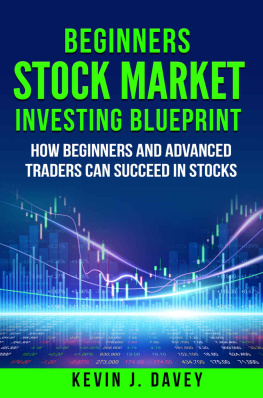


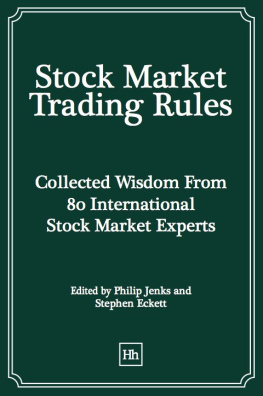
![Ryan Mallory [Ryan Mallory] - The Part-Time Trader: Trading Stock as a Part-Time Venture, + Website](/uploads/posts/book/124134/thumbs/ryan-mallory-ryan-mallory-the-part-time-trader.jpg)
